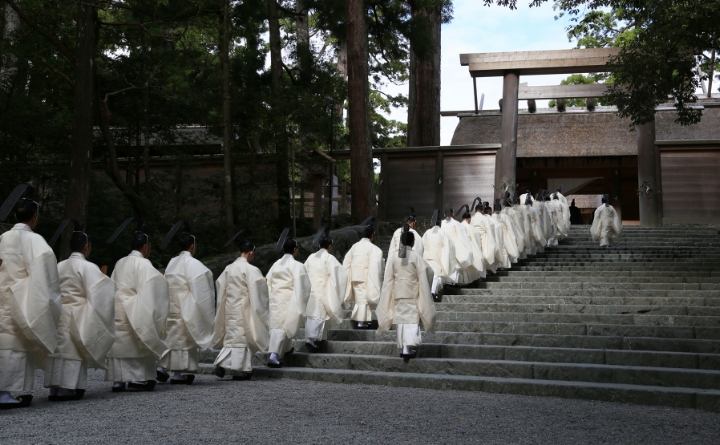Matsuri at Jingu
Ever since the enshrinement of Amaterasu-Omikami in Ise, the priesthood of Jingu have conducted rituals and prayed for a peaceful world. These rituals and ceremonies are performed under the direction of Amaterasu-Omikami’s direct descendent, the Tenno himself. Thus the rituals conducted at Jingu can be referred to as Imperial rituals.
Matsuri at Jingu can be divided into three groups. The first includes regularly conducted daily and annual rituals, such as Kan’name-sai in October and Tsukinami-sai in June and December. The second are exceptional rituals, which are conducted on special occasions for the benefit of the Imperial Family, the nation, or Jingu. The third are rituals for the Shikinen Sengu, conducted every twenty years.
Tenno sends an Imperial Envoy to Jingu to dedicate textiles called heihaku at certain important rituals. Some rituals feature the sacred dance and music called kagura.
The annual rituals are based on the cycle of rice cultivation, the staple food of the Japanese. The most important ceremony of the year is Kan’name-sai, during which Jingu priests offer the first rice of the year harvested at Jingu and dedicate a prayer of gratitude to Amaterasu-Omikami for presenting the first rice to the terrestrial world through her grandson.
At Kan’name-sai, a bundle of ears of new rice grown by the Tenno is also dedicated to the kami. Furthermore, ears of new rice collected from rice farmers throughout the country are hung along the fence of the main sanctuary.

Glossary
The ancestral kami of the Tenno and the Imperial family
Ritual offering of dance, often accompanied by song and music.
Ancient court music